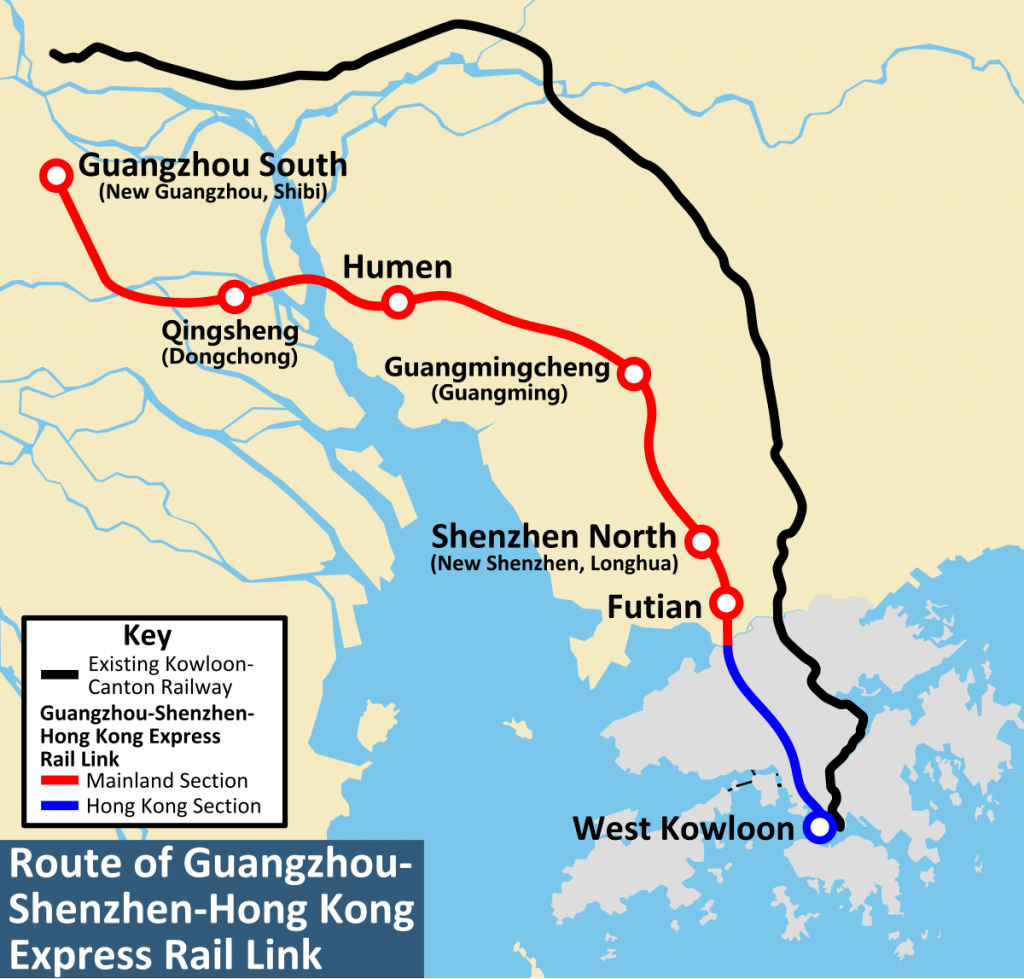
The Guangzhou–Shenzhen Intercity Railway is one of the most ambitious urban rail projects in southern China, designed to knit together the rapidly growing cities of the Greater Bay Area. Officially opened in December 2023, the line reflects China’s commitment to high-capacity, high-speed regional transit as a driver of economic integration and urban sustainability.
Project Overview
The Guangzhou–Shenzhen Intercity Railway, sometimes referred to as the Guangzhou–Dongguan–Shenzhen Intercity, forms part of a broader Pearl River Delta intercity rail network. This system is envisioned to connect Guangzhou, Shenzhen, Dongguan, Zhuhai, and other key cities into a one-hour travel circle.
The line runs approximately 106 kilometers, linking Guangzhou East Railway Station to Huanggang Port in Shenzhen, with 20 stations spread along the corridor. It is a commuter-focused high-speed line, designed to serve not only long-distance travelers but also daily commuters moving between residential areas, industrial hubs, and commercial districts.
Engineering and Construction
From an engineering standpoint, the project represents a complex feat of design and delivery. Construction began in 2016, and the corridor was built to dual-track electrified standards, with trains capable of reaching 200 km/h. This balance of speed and accessibility allows the railway to serve frequent stops while still dramatically reducing travel times.
The alignment traverses a highly urbanized corridor, demanding innovative solutions in tunneling, bridge construction, and integration with existing infrastructure. Engineers employed a mix of cut-and-cover tunnels, elevated viaducts, and embankments to minimize land acquisition while accommodating dense urban fabric. Several stations were built as multimodal hubs, directly connecting with metro lines, bus terminals, and national high-speed rail stations.
Operations and Capacity
The Guangzhou–Shenzhen Intercity Railway is operated by China Railway Guangzhou Group, using modern EMU (Electric Multiple Unit) rolling stock with high acceleration and deceleration performance suited to commuter services. Trains are designed for quick boarding and alighting, aided by platform screen doors at major stations and generous vertical circulation to handle peak flows.
The line has a planned frequency of up to every 5 minutes in peak periods, enabling throughput comparable to urban metros while covering longer regional distances. This flexibility positions the railway as both a commuter backbone and a relief line for the heavily used Guangzhou–Shenzhen High-Speed Railway, which primarily serves intercity travelers.
Economic and Social Impact
The intercity line is expected to carry hundreds of thousands of passengers daily, cutting journey times between Guangzhou and Shenzhen to under an hour and providing efficient links to Dongguan’s fast-growing industrial zones. By reducing dependence on road transport, it also helps relieve congestion and lower emissions across the Greater Bay Area.
Strategically, the railway is a vital piece of China’s plan to integrate the Greater Bay Area into a cohesive economic powerhouse, linking manufacturing centers, ports, and innovation hubs with rapid, reliable mobility.
Lessons for Engineers
For civil and rail engineers, the Guangzhou–Shenzhen Intercity Railway highlights the challenges of delivering large-scale transit in megacity regions: balancing speed with accessibility, coordinating construction in dense corridors, and designing stations as integrated nodes. It demonstrates how engineering innovation can underpin economic growth, while shaping sustainable and connected urban futures.
- Subscribe to Our Newsletter: Stay updated with the latest insights, tips, and innovations in civil engineering.
- Check Out These Must-Read Resources:
- A comprehensive book on civil engineering to enhance your understanding of structural design and construction techniques.
- A captivating book about the lives of great civil engineers, showcasing the pioneers who shaped the modern world.
- A practical project inspection checklist—an essential tool for every engineer involved in site supervision and quality control.
- Dive into the genius of the Renaissance with our recommended book about Leonardo da Vinci, exploring his contributions to engineering and architecture.
- Don’t miss our field notebook and journal, designed specifically for civil engineers and architects to document projects, ideas, and on-site observations
No responses yet